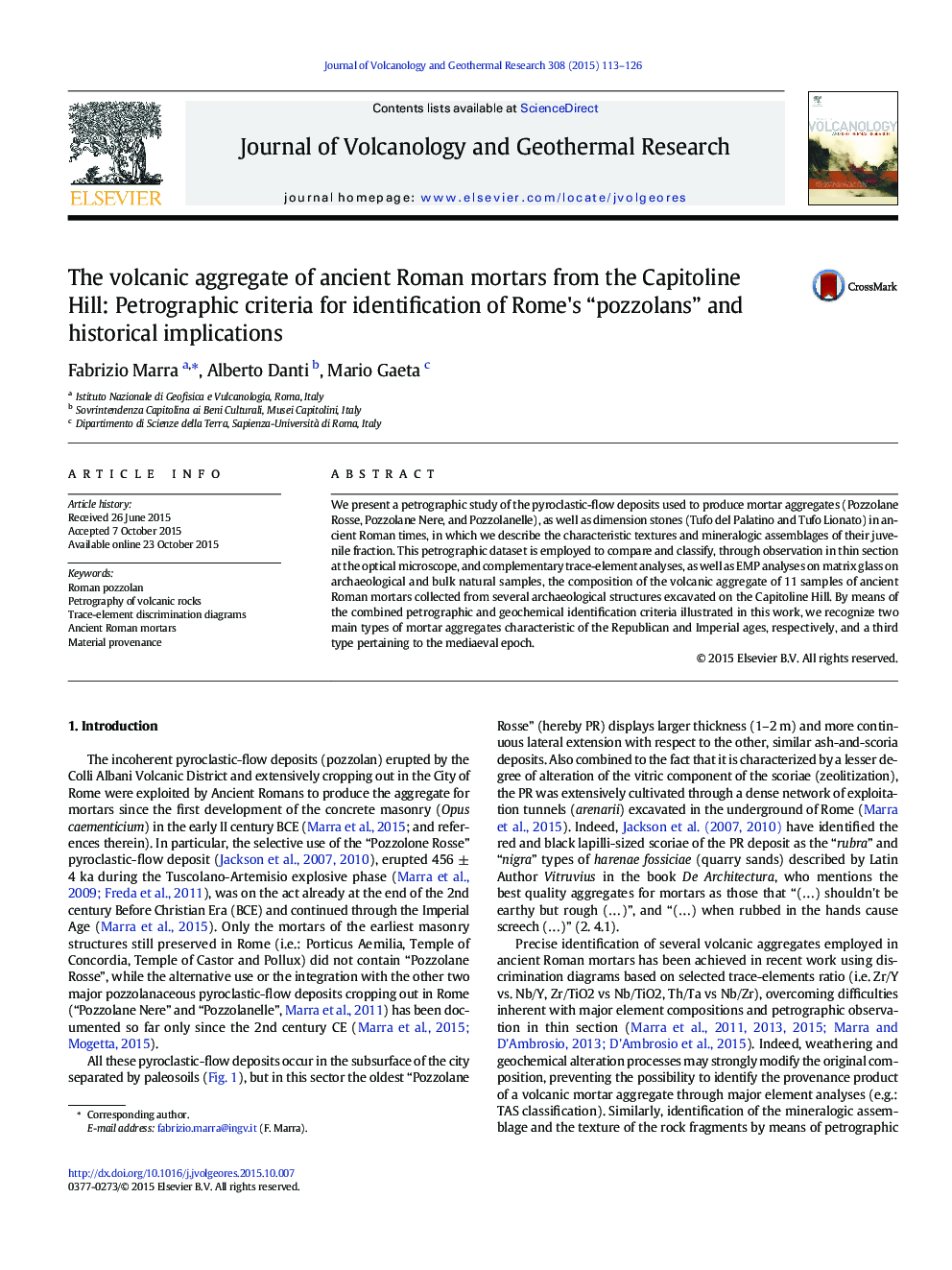| Article ID | Journal | Published Year | Pages | File Type |
|---|---|---|---|---|
| 6439611 | Journal of Volcanology and Geothermal Research | 2015 | 14 Pages |
Abstract
We present a petrographic study of the pyroclastic-flow deposits used to produce mortar aggregates (Pozzolane Rosse, Pozzolane Nere, and Pozzolanelle), as well as dimension stones (Tufo del Palatino and Tufo Lionato) in ancient Roman times, in which we describe the characteristic textures and mineralogic assemblages of their juvenile fraction. This petrographic dataset is employed to compare and classify, through observation in thin section at the optical microscope, and complementary trace-element analyses, as well as EMP analyses on matrix glass on archaeological and bulk natural samples, the composition of the volcanic aggregate of 11 samples of ancient Roman mortars collected from several archaeological structures excavated on the Capitoline Hill. By means of the combined petrographic and geochemical identification criteria illustrated in this work, we recognize two main types of mortar aggregates characteristic of the Republican and Imperial ages, respectively, and a third type pertaining to the mediaeval epoch.
Related Topics
Physical Sciences and Engineering
Earth and Planetary Sciences
Geochemistry and Petrology
Authors
Fabrizio Marra, Alberto Danti, Mario Gaeta,
